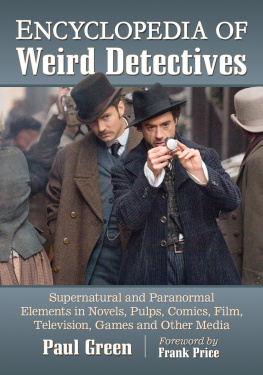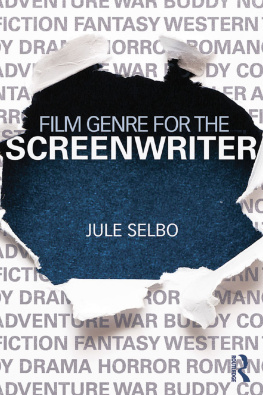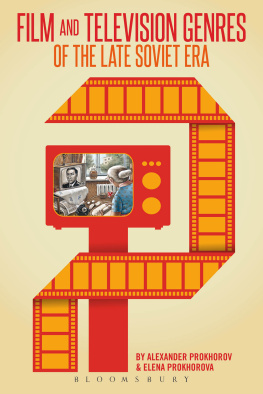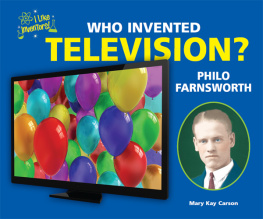
Women Do Genre in Film and Television
This volume examines how different generations of women work within the genericity of audiovisual storytelling not necessarily to undo or subvert popular formats, but to draw on their generative force. Recent examples of filmmakers and creative practitioners within and outside Hollywood remind us that women are in various ways authoring commercially and culturally impactful texts across a range of genres. Put simply, this volume asks: what do women who are creatively engaged with audiovisual industries do with genre and what does genre do with them? The contributors to the collection respond to this question from diverse perspectives and with different answers, spanning issues of direction, screenwriting, performance and audience address/reception.
Mary Harrod is Assistant Professor in French Studies at the University of Warwick, UK.
Katarzyna Paszkiewicz is Lecturer in English Studies at the University of Barcelona, Spain.
Routledge Research in Cultural and Media Studies
For a full list of titles in this series, please visit www.routledge.com.
109 Media Representations of Anti-Austerity Protests in the EU
Grievances, Identities and Agency
Edited by Tao Papaioannou and Suman Gupta
110 Media Practices, Social Movements, and Performativity
Transdisciplinary Approaches
Edited by Susanne Foellmer, Margreth Lnenborg, and Christoph Raetzsch
111 The Dark Side of Camp Aesthetics
Queer Economies of Dirt, Dust and Patina
Edited by Ingrid Hotz-Davies, Georg Vogt, and Franziska Bergmann
112 The Materiality of Love
Essays on Affection and Cultural Practice
Edited by Anna Malinowska and Michael Gratzke
113 Fashion and Masculinities in Popular Culture
Adam Geczy and Vicki Karaminas
114 Geomedia Studies
Spaces and Mobilities in Mediatized Worlds
Edited by Karin Fast, Andr Jansson, Johan Lindell, Linda Ryan Bengtsson, and Mekonnen Tesfahuney
115 Cultural and Political Nostalgia in the Age of Terror
The Melancholic Sublime
Matthew Leggatt
116 New Feminisms in South Asian Social Media, Film, and Literature
Disrupting the Discourse
Edited by Sonora Jha and Alka Kurian
117 Women Do Genre in Film and Television
Edited by Mary Harrod and Katarzyna Paszkiewicz
First published 2018
by Routledge
711 Third Avenue, New York, NY 10017
and by Routledge
2 Park Square, Milton Park, Abingdon, Oxon OX14 4RN
Routledge is an imprint of the Taylor & Francis Group, an informa business
2018 Taylor & Francis
The right of the editors to be identified as the authors of the editorial material, and of the authors for their individual chapters, has been asserted in accordance with sections 77 and 78 of the Copyright, Designs and Patents Act 1988.
All rights reserved. No part of this book may be reprinted or reproduced or utilised in any form or by any electronic, mechanical, or other means, now known or hereafter invented, including photocopying and recording, or in any information storage or retrieval system, without permission in writing from the publishers.
Trademark notice: Product or corporate names may be trademarks or registered trademarks, and are used only for identification and explanation without intent to infringe.
Library of Congress Cataloging in Publication Data
CIP data has been applied for.
ISBN: 978-1-138-69580-1 (hbk)
ISBN: 978-1-315-52609-6 (ebk)
Typeset in Sabon
by codeMantra
Christine Gledhill
Over many years teaching courses on Genre and Gender, I became increasingly concerned by the split in both critical writing and student interest between formal or developmental accounts of particular genres on the one hand and feminist-driven investigations of gender representation on the other. Moreover, early feminist perspectives on the latter assumed that film genres, relying for audience recognition on conventions of plot, setting and character, served only to circulate and confirm negative stereotypes of women or to position female protagonists as projections of patriarchal psycho-sexual fantasy. This led both feminist theory and filmmaking practice in the direction of counter cinema. While, in the intervening years, ideas about genre or gender representation have separately grown in subtlety, rarely are the two concepts thought through each other; feminist interventions, both by makers and critics, have been more concerned with negating genre through subversion or avant-garde practices, than working with or through it.
It was the ambition, then, of my anthology, Gender Meets Genre in Postwar Cinemas (2012), to re-envisage the relation of these concepts as an encounter between different cultural and aesthetic practices that impact on and may serve each other. In particular, I sought to encourage contributors to give genre priority, to ask how gender gets into genre and what genre does with it an ambition that was only partially successful, since, perhaps inevitably, political and personal concerns about gender representation drive the feminist critical agenda, from which it is difficult to step back. However, as I reasoned then and still think now, the challenge is to explore the aesthetic and imaginative power of gender as a tool of genre, to find what genres do with gender and what they return to the cultural sphere (Gledhill 2012: 2). This means qualifying both representation and ideology as concepts, which serve either to separate fiction making and social life as two distinct arenas the first reflecting or misrepresenting the latter or to collapse them into one totalising ideological purpose.
Raymond Williams (1973), writing on the relation between culture and society, argues against the conception of fictional production and aesthetic experience as separate from social life; rather, cultural practices and aesthetic responses are integral to human societies. In a somewhat similar vein but coming from the direction of genre, Mikhail Bakhtin (1986) argues that since all forms of human communication have their basis in social use, they are also rooted in shared conventions, in other words are generic. Any communication form carries with it not only past uses, but the potential out of which new uses can emerge. Bakhtin goes on to complicate the relation between aesthetic production and ideology. He argues that the practices and purposes of different spheres of cultural communication are distinct distinguishing, for example, the military command, the medical instruction, everyday interactions, from fictional practices such as the novel or, for our purposes, the genre film. All are practices of social life but have different goals. As Bakhtin conceives the novel, which ingests and re-forms to different ends the discourses and cultural forms of social life, so we can argue of the cinema. Thus, taken together, Williams and Bakhtin enable a shift in understanding the relation between generic production and social gender ideologies. If gender is itself under constant process of social construction, it can be said itself to be socially generic. Media genres, then, do not reflect or misrepresent gender as it really exists in social world; rather the practices and cultural imaginaries through which gender emerges as a set of widely shared social conventions provide materials to the dramatic purposes of film and television genre fictions. In media genres, the genericity of social gender is put to fictional and dramatic use, making its aporias and contests visible and opening up multiple possibilities of generic-gender play and transformation.









